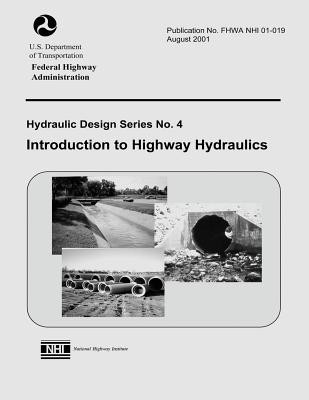
- We will send in 10–14 business days.
- Author: Federal Highway Administration
- Publisher: CreateSpace Independent Publishing Platform
- Year: 2015
- Pages: 220
- ISBN-10: 1508666067
- ISBN-13: 9781508666066
- Format: 21.6 x 28 x 1.2 cm, softcover
- Language: English
- SAVE -10% with code: EXTRA
Introduction to Highway Hydraulics (e-book) (used book) | bookbook.eu
Reviews
Description
Highway hydraulic structures perform the vital function of conveying, diverting, or removing surface water from the highway right-of-way. They should be designed to be commensurate with risk, construction cost, importance of the road, economy of maintenance, and legal requirements. One type of drainage facility will rarely provide the most satisfactory drainage for all sections of a highway. Therefore, the designer should know and understand how different drainage facilities can be integrated to provide complete drainage control. Drainage design covers many disciplines, of which two are hydrology and hydraulics. The determination of the quantity and frequency of runoff, surface and groundwater, is a hydrologic problem. The design of structures with the proper capacity to divert water from the roadway, remove water from the roadway, and pass collected water under the roadway is a hydraulic problem. This publication will briefly discuss hydrologic techniques with an emphasis on methods suitable to small drainage areas, since many components of highway drainage (e.g., storm drains, roadside ditches, etc.) service primarily small drainage areas. Fundamental hydraulic concepts are also briefly discussed, followed by open-channel flow principles and design applications of open-channel flow in highway drainage. Then, a parallel discussion of closed conduit concepts and applications in highway drainage will be presented.
EXTRA 10 % discount with code: EXTRA
The promotion ends in 20d.04:14:14
The discount code is valid when purchasing from 10 €. Discounts do not stack.
- Author: Federal Highway Administration
- Publisher: CreateSpace Independent Publishing Platform
- Year: 2015
- Pages: 220
- ISBN-10: 1508666067
- ISBN-13: 9781508666066
- Format: 21.6 x 28 x 1.2 cm, softcover
- Language: English English
Highway hydraulic structures perform the vital function of conveying, diverting, or removing surface water from the highway right-of-way. They should be designed to be commensurate with risk, construction cost, importance of the road, economy of maintenance, and legal requirements. One type of drainage facility will rarely provide the most satisfactory drainage for all sections of a highway. Therefore, the designer should know and understand how different drainage facilities can be integrated to provide complete drainage control. Drainage design covers many disciplines, of which two are hydrology and hydraulics. The determination of the quantity and frequency of runoff, surface and groundwater, is a hydrologic problem. The design of structures with the proper capacity to divert water from the roadway, remove water from the roadway, and pass collected water under the roadway is a hydraulic problem. This publication will briefly discuss hydrologic techniques with an emphasis on methods suitable to small drainage areas, since many components of highway drainage (e.g., storm drains, roadside ditches, etc.) service primarily small drainage areas. Fundamental hydraulic concepts are also briefly discussed, followed by open-channel flow principles and design applications of open-channel flow in highway drainage. Then, a parallel discussion of closed conduit concepts and applications in highway drainage will be presented.


Reviews